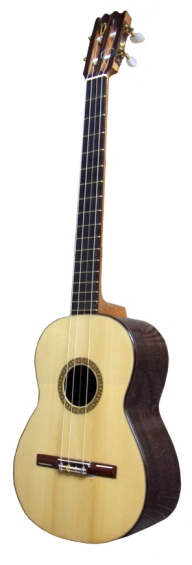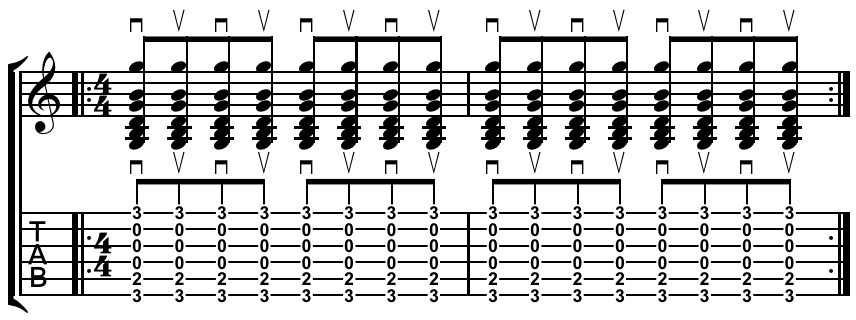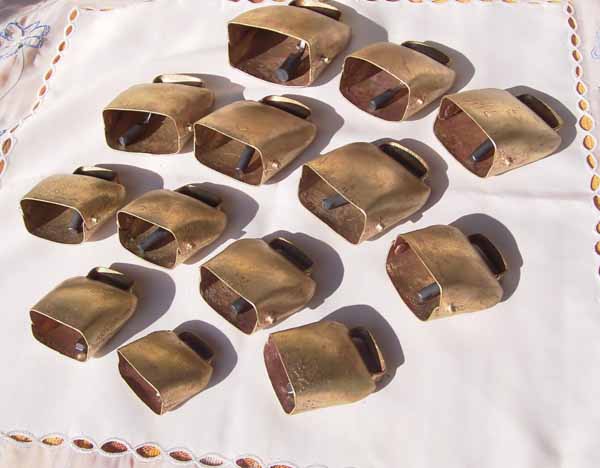|
Coladeira
The ''coladeira'' (; Cape Verdean Creole: ''koladera,'' ) is a music genre from the Cape Verde islands in the central Atlantic Ocean. It is characterized by a variable tempo, a 2-beat bar, and (in its most traditional form) a harmonic structure based in a cycle of fifths. The lyrics structure is organized in strophes that alternate with a refrain. The tone is generally joyful and themes often include social criticism. Instrumentation typically includes a guitar, a '' cavaquinho'', and percussion, among others. According to oral tradition, the genre originated in the 1930s when the composer Anton’ Tchitch’ intentionally speeded up the tempo of a '' morna.'' In the 1950s, it began to incorporate electronic influences, and beginning in the 1980s it was influenced by compas music from Haiti. ''Coladeira'' also refers to a ballroom dance done in pairs accompanied by the music. Genre As a music genre the ''coladeira'' is characterized by having a variable tempo, from ''a ... [...More Info...] [...Related Items...] OR: [Wikipedia] [Google] [Baidu] |
Morna (music)
The morna (pronunciation in both Portuguese and Cape Verdean Creole: ) is a music and dance genre from Cape Verde. Lyrics are usually in Cape Verdean Creole, and instrumentation often includes cavaquinho, clarinet, accordion, violin, piano and guitar. Morna is widely considered the national music of Cape Verde, as is the fado for Portugal, the tango for Argentina, the merengue for Dominican Republic, the rumba for Cuba, and so on. The best internationally known morna singer was Cesária Évora. Morna and other genres of Cape Verdean music are also played in Cape Verdean migrant communities abroad, especially in New England in the US, Portugal, the Netherlands, France, West Africa and parts of Latin America. As a music genre As a music genre, the morna is characterized by having a lento tempo, a 2-beat bar (sometimes 4)Brito, M., ''Breves Apontamentos sobre as Formas Musicais existentes em Cabo Verde'' — 1998 and in its most traditional form by having a harmonic structure ... [...More Info...] [...Related Items...] OR: [Wikipedia] [Google] [Baidu] |
Compas
Compas, also known as compas direct or compas direk (; Haitian Creole: ''konpa'', ''kompa'' or ''kompa dirèk''), is a modern méringue dance music genre of Haiti. The genre was popularized following the creation of Ensemble Aux Callebasses in (1955), which became Ensemble Nemours Jean-Baptiste In 1957. The frequent tours of the many Haitian bands have cemented the style in all the Caribbean. Therefore, compas is the main music of several countries such as Dominica and the French Antilles. Whether it is called zouk, where French Antilles artists of Martinique and Guadeloupe have taken it, or compas in places where Haitian artists have toured, this méringue style is influential in part of the Caribbean, Portugal, Cape Verde, France, part of Canada, South and North America. Etymology and characteristics The word "Compas" means "measure" in Spanish or "rhythm", and one of the most distinctive characteristics of compas is the consistent pulsating tanbou beat, a trait common to ma ... [...More Info...] [...Related Items...] OR: [Wikipedia] [Google] [Baidu] |
Cape Verde
, national_anthem = () , official_languages = Portuguese , national_languages = Cape Verdean Creole , capital = Praia , coordinates = , largest_city = capital , demonym = Cape Verdean or Cabo Verdean , ethnic_groups_year = 2017 , government_type = Unitary semi-presidential republic , leader_title1 = President , leader_name1 = José Maria Neves , leader_title2 = Prime Minister , leader_name2 = Ulisses Correia e Silva , legislature = National Assembly , area_rank = 166th , area_km2 = 4033 , area_sq_mi = 1,557 , percent_water = negligible , population_census = 561,901 , population_census_rank = 172nd , population_census_year = 2021 , population_density_km2 = 123.7 , population_density_sq_mi = 325.0 , population_density_rank = 89th , GDP_PPP ... [...More Info...] [...Related Items...] OR: [Wikipedia] [Google] [Baidu] |
Cavaquinho
The cavaquinho (pronounced in Portuguese) is a small Portuguese string instrument in the European guitar family, with four wires or gut strings. More broadly, ''cavaquinho'' is the name of a four-stringed subdivision of the lute family of instruments. A cavaquinho player is called a ''cavaquista''. Forms There are several forms of cavaquinho used in different regions and for different styles of music. Separate varieties are named for Portugal, Braga (''braguinha''), Minho (''minhoto''), Lisbon, Madeira, Brazil, and Cape Verde; other forms are the ''braguinha'', ‘''cavacolele''’, cavaco, machete, and ukulele. Portuguese The Venezuelan concert cuatro is very nearly the same instrument, but somewhat larger. Cavaquinho Brasileiro, cavaco, and cuatro The Brazilian cavaquinho is slightly larger than the Portuguese cavaquinho, resembling a small classical guitar. Its neck is raised above the level of the sound box, and the sound hole is usually round, like cavaquinhos from ... [...More Info...] [...Related Items...] OR: [Wikipedia] [Google] [Baidu] |
Cavaquinho
The cavaquinho (pronounced in Portuguese) is a small Portuguese string instrument in the European guitar family, with four wires or gut strings. More broadly, ''cavaquinho'' is the name of a four-stringed subdivision of the lute family of instruments. A cavaquinho player is called a ''cavaquista''. Forms There are several forms of cavaquinho used in different regions and for different styles of music. Separate varieties are named for Portugal, Braga (''braguinha''), Minho (''minhoto''), Lisbon, Madeira, Brazil, and Cape Verde; other forms are the ''braguinha'', ‘''cavacolele''’, cavaco, machete, and ukulele. Portuguese The Venezuelan concert cuatro is very nearly the same instrument, but somewhat larger. Cavaquinho Brasileiro, cavaco, and cuatro The Brazilian cavaquinho is slightly larger than the Portuguese cavaquinho, resembling a small classical guitar. Its neck is raised above the level of the sound box, and the sound hole is usually round, like cavaquinhos from ... [...More Info...] [...Related Items...] OR: [Wikipedia] [Google] [Baidu] |
Bass (music)
Bass or Basses may refer to: Fish * Bass (fish), various saltwater and freshwater species Music * Bass (sound), describing low-frequency sound or one of several instruments in the bass range: ** Bass (instrument), including: ** Acoustic bass guitar, with a hollow body ** Bass clarinet, a clarinet with a lower sound ** Bass cornett, a low pitched wind instrument ** Bass drum, a large drum ** Bass flute, an instrument one octave lower than a flute ** Bass guitar, with a solid body and electric pickups ** Bass recorder, an instrument one octave lower than the alto recorder ** Bass sarrusophone, a low pitched double reed instrument ** Bass saxophone ** Bass trombone, a lower pitched trombone ** Bass trumpet ** Bass violin ** Double bass, the largest and lowest pitched bowed string instrument ** Electric upright bass, the electric version of a double bass ** Tuba, often called "the bass" in the context of brass instruments * Bass (voice type), a type of classical male singing v ... [...More Info...] [...Related Items...] OR: [Wikipedia] [Google] [Baidu] |
Strum
In music, strumming is a way of playing a stringed instrument such as a guitar, ukulele, or mandolin. A strum or stroke is a sweeping action where a finger or plectrum brushes over several strings to generate sound. On most stringed instruments, strums are typically executed by a musician's designated strum hand (typically the musician's dominant hand, which is often responsible for generating the majority of sound on a stringed instrument), while the remaining hand (referred to as the fret hand on most instruments with a fingerboard) often supports the strum hand by altering the tones and pitches of any given strum. Strums are often contrasted with plucking, as a means of vibrating an instrument's strings. In plucking, a specific string or designated set of strings are individually targeted to vibrate, whereas in strumming, a less precise targeting is usually used. Compared to other plucking techniques, any group of strings brushed in a single sweep by a plectrum could be con ... [...More Info...] [...Related Items...] OR: [Wikipedia] [Google] [Baidu] |
Conga
The conga, also known as tumbadora, is a tall, narrow, single-headed drum from Cuba. Congas are staved like barrels and classified into three types: quinto (lead drum, highest), tres dos or tres golpes (middle), and tumba or salidor (lowest). Congas were originally used in Afro-Cuban music genres such as conga (hence their name) and rumba, where each drummer would play a single drum. Following numerous innovations in conga drumming and construction during the mid-20th century, as well as its internationalization, it became increasingly common for drummers to play two or three drums. Congas have become a popular instrument in many forms of Latin music such as son (when played by conjuntos), descarga, Afro-Cuban jazz, salsa, songo, merengue and Latin rock. Although the exact origins of the conga drum are unknown, researchers agree that it was developed by Cuban people of African descent during the late 19th century or early 20th century. Its direct ancestors are thought to be ... [...More Info...] [...Related Items...] OR: [Wikipedia] [Google] [Baidu] |
Cowbell (instrument)
The cowbell is an idiophone hand percussion instrument used in various styles of music, such as Latin and rock. It is named after the similar bell used by herdsmen to keep track of the whereabouts of cows. The instrument initially and traditionally has been metallic; however, contemporarily, some variants are made of synthetic materials. Origins While the cowbell is commonly found in musical contexts, its origin can be traced to freely roaming animals. In order to help identify the herd to which these animals belonged, herdsmen placed these bells around the animal's neck. As the animals moved about the bell would ring, thus making it easier to know of the animal's whereabouts. Though the bells were used on various types of animals, they are typically referred to as "cowbells" due to their extensive use with cattle. Tuned cowbells Tuned cowbells or ''Almglocken'' (their German name, ‘Alm’ meaning a mountain meadow, and ‘Glocken’ bells), sometimes known by the Engli ... [...More Info...] [...Related Items...] OR: [Wikipedia] [Google] [Baidu] |
Classical Guitar
The classical guitar (also known as the nylon-string guitar or Spanish guitar) is a member of the guitar family used in classical music and other styles. An acoustic wooden string instrument with strings made of gut or nylon, it is a precursor of the modern acoustic and electric guitars, both of which use metal strings. Classical guitars derive from the Spanish vihuela and gittern of the fifteenth and sixteenth century. Those instruments evolved into the seventeenth and eighteenth-century baroque guitar—and by the mid-nineteenth century, early forms of the modern classical guitar. For a right-handed player, the traditional classical guitar has twelve frets clear of the body and is properly held up by the left leg, so that the hand that plucks or strums the strings does so near the back of the sound hole (this is called the classical position). However, the right-hand may move closer to the fretboard to achieve different tonal qualities. The player typically holds the left leg ... [...More Info...] [...Related Items...] OR: [Wikipedia] [Google] [Baidu] |
Shaker (percussion)
The word shaker describes various percussive musical instruments used for creating rhythm in music. They are called shakers because the method of creating the sound involves shaking them – moving them back and forth in the air rather than striking them. Most may also be struck for a greater accent on certain beats. Shakers are often used in rock and other popular styles to provide the ride pattern along with or substituting for the ride cymbal. Types of shaker A shaker may comprise a container, partially full of small loose objects such as beans, which create the percussive sounds as they collide with each other, the inside surface, or other fixed objects inside the container – as in a rainstick, caxixi or egg shaker. See also *Hand percussion Hand percussion is a percussion instrument that is held in the hand. They can be made from wood, metal or plastic, bottles stops and are usually shaken, scraped, or tapped with fingers or a stick. It includes all instruments that ar ... [...More Info...] [...Related Items...] OR: [Wikipedia] [Google] [Baidu] |
Trumpet
The trumpet is a brass instrument commonly used in classical and jazz ensembles. The trumpet group ranges from the piccolo trumpet—with the highest register in the brass family—to the bass trumpet, pitched one octave below the standard B or C trumpet. Trumpet-like instruments have historically been used as signaling devices in battle or hunting, with examples dating back to at least 1500 BC. They began to be used as musical instruments only in the late 14th or early 15th century. Trumpets are used in art music styles, for instance in orchestras, concert bands, and jazz ensembles, as well as in popular music. They are played by blowing air through nearly-closed lips (called the player's embouchure), producing a "buzzing" sound that starts a standing wave vibration in the air column inside the instrument. Since the late 15th century, trumpets have primarily been constructed of brass tubing, usually bent twice into a rounded rectangular shape. There are many distinc ... [...More Info...] [...Related Items...] OR: [Wikipedia] [Google] [Baidu] |







